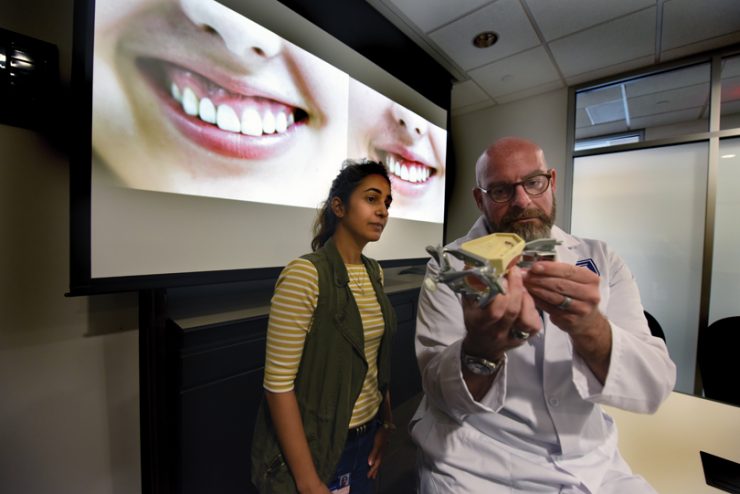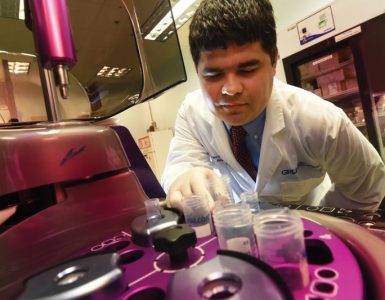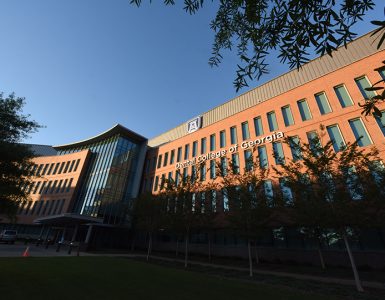Modern dentistry offers a plethora of ways to improve teeth — straightening, whitening, contouring, bonding, etc. — but what if your teeth aren’t the problem? What if your gums are?
Some people are dissatisfied with their appearance because of a gummy smile, and a DCG periodontist is researching ways to solve
the problem.
“If someone shows a lot of gum when smiling, it’s generally caused by too much bone, a short upper lip or overactive muscles,” says Dr. Mark Brunner, who came to the faculty in 2016 after 15 years of private practice in Atlanta and is now assistant professor and residency director in the Department of Periodontics. “I’m about health, not cosmetics, so I definitely try to minimize cosmetic therapy unless a patient specifically asks for it. But I’ve discovered there’s a large demand for improving gummy smiles.”
The current treatment, a shot of Botulinum toxin type A (Botox), relaxes overactive lip muscles. But the procedure is expensive, temporary and ineffective for certain types of gummy smiles. Brunner wanted a more permanent and all-encompassing solution.
He recently obtained an intramural grant to compare alternative treatments. One involves suturing the small rectangular pieces of gum inside the upper lip, forcing it down. “The procedure takes about half an hour in the dental chair, with the same type of local anesthetic used for a filling. We see an immediate result,” he says.
The other techniques — also quick and easy — involve eliminating excess bone or exposing more of the crown of the tooth. The treatments are specific to the patient’s anatomical features, of course, but the fact that virtually any gummy smile can be repaired has inspired nothing short of elation in Brunner’s patients. “They’re ecstatic,” he says. “They fill out questionnaires afterward, and their responses are off the charts. A lot of them didn’t know these procedures were even available, so they’re just thrilled.”
Brunner hopes to enroll at least 20 patients in the study, documenting the results so more dentists and patients are aware of the treatments. “Something so simple,” he says, “can be a life-changer.”





